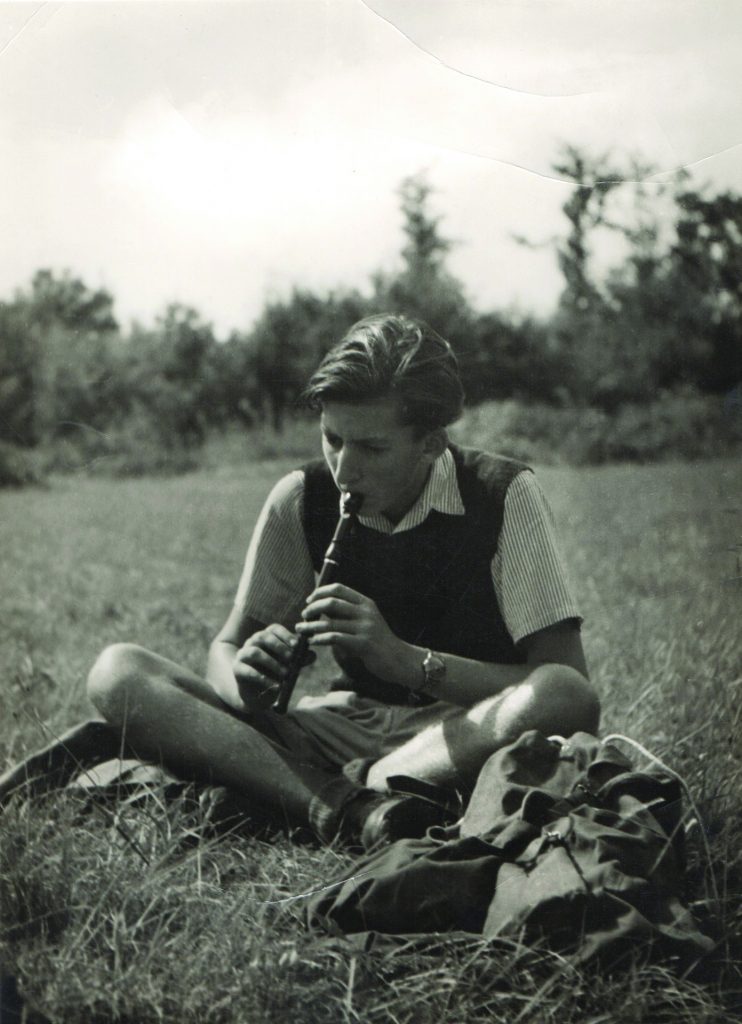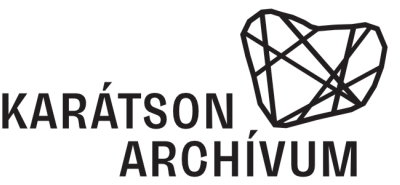BIOGRAPHY OF GÁBOR KARÁTSON
Gábor Karátson (1935–2015) was a painter, writer, philosopher, literary translator, art teacher, passionate environmentalist, and a member of the Danube Circle environmental organisation. A man of stature and integrity, the radiance of his personality was reserved for the intimate circle of his friends and acquaintances. His distinctive appearance and the narrow hairband he wore round his forehead make him instantly recognisable, although few people other than his closest admirers are aware of his artistic and literary achievements.
He translated the two essential works of Chinese philosophy: his translation of the Tao Te Ching, the Book of the Way and its Virtue, was published in 1990, and his translation of the I Ching – The Book of Changes, was published in three volumes in 2003. He also translated works by the Bauhaus theorists: Johannes Itten’s The Art of Colour (1978) and Paul Klee’s Pedagogical Sketchbook (1980).
I was born in Budapest on 21 May 1935. My father, Dr László Karátson, was a lawyer, and my maternal grandfather, Viktor Olgyai, was a graphic artist and painter, the founder of the Graphics Reproduction Department at the Budapest College of Fine Arts, and the mentor of some renowned Hungarian graphic artists. I don’t remember going through a “drawing phase” as a child (although this means nothing: my childhood was essentially obliterated by my mother’s death, falling bombs, and flight. As an adult, I would show far greater interest in the drawings chalked on the street by children in the 1970s, relics of a lost Atlantis submerged by the power of television: I published much of my collection in my 1997 book Az együgyű Isten [The simple god]). I must have been about seven when I was introduced to a newly published collection of etchings by Rembrandt, which made a huge impression on me. In fact, I produced my own “Rembrandt collection”. At the age of 10, while sheltering in the basement during the siege, I even produced “Japanese woodcuts”, based on memories of my grandfather’s Japanese woodcut collection. These have all disappeared, although the watercolours I happily painted on the shore of Lake Lucerne in Switzerland at the age of 12, inspired by the mountains and the lake, survive to this day.
In that charmed and peaceful world, safe from the hell of war, I was fortunate to encounter the works of Leonardo da Vinci, Albert Dürer, and Konrad Witz in the museums and touring exhibitions. Strangely, the Chinese characters that would later come to mean so much to me are already apparent in the skies of these Swiss landscapes: I had carried with me from Budapest to Switzerland a 10-year-old’s burgeoning love of Lao Tzu and Confucius.
So it would have been quite natural for me to want to be a painter, had not my boundless yearning for freedom and my multifarious interests prevented me from “wanting to be” anything at all.

